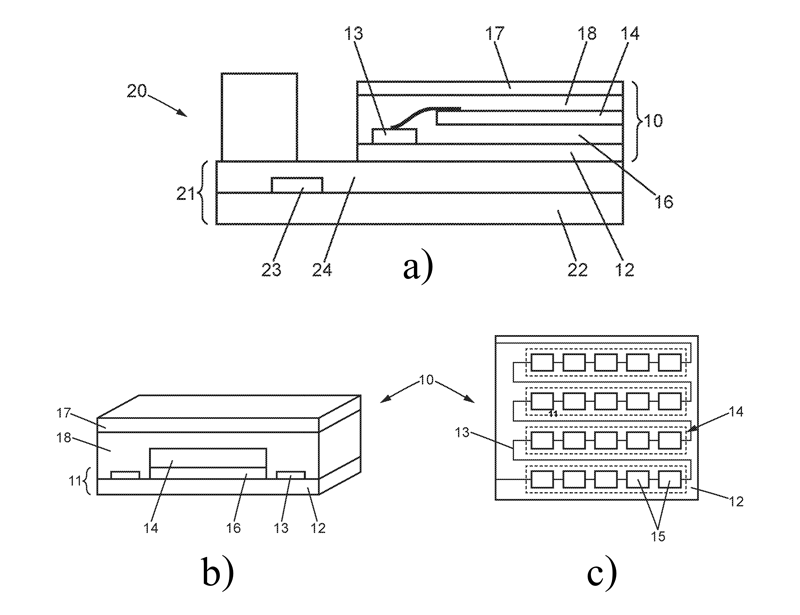Patent – Flexible solar generators for satellites
Dr Tahsin Ali Kassam at Murgitroyd summarises a recently granted patent for a flexible solar generator to achieve better protection against electromagnetic radiation, oxygen or ions present in space.

Flexible solar generators used in satellites are often made up of photovoltaic (PV) cells attached to flexible supports.
This can aid the compactness of satellites and thereby the number of satellites per launch.
The PV cells can be connected to each other and to the satellite via wire harnesses or electrically conductive tracks. Such wire harnesses tend to be bulky, while the tracks can easily erode due to exposure to electromagnetic (EM) radiation, oxygen or ions present in space.
In January 2022, Airbus Defence and Space SAS was granted EP patent EP3884526B1 designating the UK, and titled Flexible Satellite Solar Generator and Manufacturing Method.
The patent claims a satellite solar generator (20) comprising a printed circuit board (PCB) (21) with a flexible electrically insulating support (22) and a plurality of electrically conductive tracks (23), which are arranged on a face of the support or in the support. An example of the solar generator according to the invention is shown in Figure a.
The solar generator further includes at least two PV modules (10) attached to the flexible support – shown for example in Figures b and c. The generator includes a connection device adapted for a connection between at least some of the modules and/or for connecting them to the satellite.
Each PV module has a PCB (11) with an electrically insulating support (12) and electrically conductive tracks (13) that are arranged on a face of the support. Optionally, the support (12) of each module may be flexible.
Each PV module also includes at least two chains (14) of PV cells (15), with each chain having a plurality of PV cells connected in series. The chains of PV cells are mounted on the face of the support that carries the electrically conductive tracks. The chains are connected to the tracks, establishing an electrical connection between them.
Each module may include a first layer of adhesive material (16) between the PV cells and the support, and a second layer of adhesive material (18) between the PV cells and the protective layer.
Each module further includes an optically transparent protective layer (17) which is attached to the PCB (11). The protective layer covers the PV cells and tracks of the PCB. This can provide, therefore, a satellite solar generator that is more reliable owing to better protection against EM radiation, oxygen or ions present in space.
The use of a common protective layer may also make it possible to stiffen each module, in particular, by stiffening the interstices between the PV cells.
The patent further claims a method for manufacturing a solar generator.
Read the full patent here: bit.ly/34mCx7t

